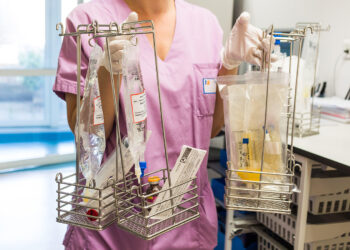[ad_1]
TOPLINE:
The rate of children and teens exposed to energy products containing caffeine rose 17.3% from 2011 to 2023, with most cases involving children aged under 6 years. Serious medical outcomes were more likely with solid formulations and among teenagers.
METHODOLOGY:
- Researchers analyzed 32,482 cases of children and adolescents aged under 20 years who had reports/exposures of adverse events from caffeine energy products called into US poison centers between 2011 and 2013, using the National Poison Data System (NPDS), which keeps records of exposure incidents.
- The variables in the study included year of exposure, age group, sex, exposure location, and cause of exposure, and also included if the young person had sought medical attention, if they received treatment, related clinical effects, medical outcomes, and product information.
- Cases were divided into whether the young person had consumed energy products that were solids (tablets, crystals, or lozenges), liquid, powder/granules, other, or unknown formulations.
- Researchers excluded exposures involving coffee, tea, and regular soft drinks with caffeine as well as energy drinks containing alcohol.
TAKEAWAY:
- Pediatric exposures to caffeinated energy products increased by 17.3% from 30.1 per 1 million in 2011 to 35.3 in 2023, with the largest increase among men.
- Most cases involved children aged under 6 years (69.6%), followed by 13-19 years (20.7%); most exposures in those aged under 6 years and those aged 6-12 years were unintentional (98% and 55.9%, respectively), while 60.7% of the older teen group were classified as intentional.
- The rate of exposure to powder/granules increased by 632.9% from 0.85 per 1 million in 2011 to 6.2 per 1 million in 2023; teens aged 13-19 years accounted for the highest rate of exposure (11.3%).
- Consumption of solid formulations like tablets or capsules was more likely to lead to serious medical outcomes (odds ratio [OR], 1.98; 95% CI, 1.81-2.17) and medical admissions (OR, 5.23; 95% CI, 4.31-6.36) than other formulations.
- Teens aged between 13 and 19 years were more likely to experience serious medical outcomes (OR, 18.83; 95% CI, 16.88-21.01) and medical admissions (OR, 12.74; 95% CI, 10.40-15.60) than children aged under 13 years.
IN PRACTICE:
“The absence of mandatory age restrictions on marketing of these products raises concerns, especially in the context of the substantial social media exposure among youth achieved by manufacturers,” study authors wrote.
SOURCE:
The study was led by Timothy R. Thompson of the Center for Injury Research and Policy at Nationwide Children’s Hospital in Columbus, Ohio. It was published online on January 31 in the Journal of Medical Toxicology.
LIMITATIONS:
The NPDS is a passive surveillance system that relies on voluntary reporting, which may lead to underestimates of exposures. Reporting bias may have led to more serious exposures or exposures involving younger children being reported. The NPDS does not use personal identifiers, so repeated exposures for the same individual may be included in the dataset. Caffeine dose and underlying medical conditions were not accounted for in the analyses. The subcategories used were limited, as some of the product information was not found online.
DISCLOSURES:
The authors reported no relevant conflicts of interest. One study author reported receiving a scholarship from the Child Injury Prevention Alliance.
This article was created using several editorial tools, including AI, as part of the process. Human editors reviewed this content before publication.
[ad_2]
Source link : https://www.medscape.com/viewarticle/caffeine-products-increased-poison-control-centers-calls-2025a10003uk?src=rss
Author :
Publish date : 2025-02-14 06:54:03
Copyright for syndicated content belongs to the linked Source.














